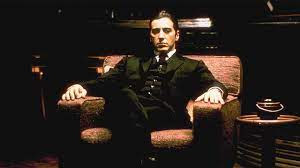Off-List: Naturlig Energi
The first
movie of 1975 will also be the first off-List movie of the year. When I
recently visited the Cinematek in Copenhagen to watch “Stjerner og Vandbærere”
I also watched “Naturlig Energi” from 1975. It was a movie I had never heard of
until I started researching movies for 75, but given the subject matter, this
was a movie I just had to watch.
“Naturlig
Energi” means Natural Energy (should not be a surprise, really) and is a
documentary on the natural alternatives to burning fossil fuels. This was
shortly after the oil crisis of 73 so supply security was a big thing, but also
in the wake of the hippie movement there was a strong concern with pollution
and being “unnatural”. Burning a finite resource is certainly unsustainable.
Global warming, however, was not a concern at the time.
What the
movie does is explore the alternatives to fossil fuel and it sets up a roadmap
to how the country can reduce or even eliminate the need for fossil fuels without
going into nuclear power (which in this context is also considered unnatural).
The
remarkable thing about this movie is that every single item explored here has
become reality or are in the process of becoming so. The motive may have
changed but the instruments are the same.
It is
suggested to reduce the need for energy for heating through better insulation
and it tells of experiments at DTH (now DTU) with energy neutral houses that
gets all it energy through solar heaters and a warm water tank. Today, building
codes prescribe low energy consumption, low energy houses is the standard and a
large percentage of houses in Denmark produce more energy with PVs than they use.
It is
suggested to use the surplus heat from power plants to heat up homes rather
than letting it go to waste. Today, all major cities in Denmark gets their
heating from a central heating network, bringing surplus heat from the power
plant and into our homes.
Wind energy
is touted as being the energy source of the future. We see the construction of
the giant 1MW turbine at Tvind and the small Riisager turbines that individuals
could buy and set up next to their home. Shortly after this movie those
Riisager turbines became the first series produced turbines to feed directly to
the grid and today 50% of the electricity demand in Denmark is covered by wind
energy. The Tvind turbine is still producing. Its technology is hopelessly outdated,
but it still works.
The problem
of intermittency, that the sun does not always shine and there is not always
wind, is emphasized and it is suggested to store surplus power as hydrogen
through electrolysis. Today we call it “power-to-X” and it is probably the
fastest growing field in the energy business. Two artificial islands are
planned in Denmark to receive power from wind turbines to convert it to
hydrogen to supply fuel for particularly ships.
Energy
sources can be combined and a decentral network of smaller powerplants that
combine electricity, heating and storage may supply small communities far more
flexibly than big power plants. Today Denmark has a network of decentral power
plants doing exactly that. Mixing energy sources and actively using the
flexibility on the grid has now become hot also outside Denmark, but we have
done it for at least 20 years already.
The movie
suggests that growth is not a given success criteria and another dogma should
be considered. Where did I hear that before?
It also
suggests that the only way all this can be done is bottom-up, by involving the
individual and take local action, with the support of politicians, of course.
This was exactly how we got all those wind turbines in the eighties and nineties
and now PVs, electrical cars and so many other items that actually works are driven
bottom-up.
The only
item mentioned in the movie which has not come true is the reduction on
transport emissions by having people live closer to work. Though, maybe it has.
We learned during the pandemic that so many work functions can be done from home,
that we do not need to travel that much and that our quality of life can be
improved remarkably if we do not have to spend two hours each day on transport.
For me
personally this was super interesting. This is exactly what I do for a living.
I have been planning wind farms for more than twenty years. My colleagues have
been designing decentralized power plants just as long and now they add
power-to-X to it and advice companies how they can become energy efficient or even
power neutral by mixing production and storage actively with the grid. I know
personally many of the people who made all this happen. I met Mr. Riisager and
I know people who worked in the Tvind turbine.
We are not
there yet. In fact, there is an awful long way to go, but this movie, 6 years
ago, showed us the way.
Very highly
recommended if you can find it.



















